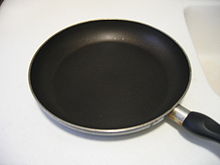 For years stores and manufacturers have promoted the advantages of Scotchgard and Teflon nonstick coatings for pots and pans, as stain-proofing for upholstered furniture and rugs, as a water repellent for clothing, for consumer goods such as dental floss, and for grease-proof food wrappers and containers. And yes, people have been convinced - with most cookware sold today being of the nonstick type, and the popularity of sofas and rugs coated with non-stain coatings. But once again, chemicals come with a price and health effects, and unfortunately these particular chemicals are found in all of us in varying levels.
For years stores and manufacturers have promoted the advantages of Scotchgard and Teflon nonstick coatings for pots and pans, as stain-proofing for upholstered furniture and rugs, as a water repellent for clothing, for consumer goods such as dental floss, and for grease-proof food wrappers and containers. And yes, people have been convinced - with most cookware sold today being of the nonstick type, and the popularity of sofas and rugs coated with non-stain coatings. But once again, chemicals come with a price and health effects, and unfortunately these particular chemicals are found in all of us in varying levels.
Polyfluorinated chemicals (PFCs) are a class of chemicals that are stain, water, and grease repellent chemicals.They have been found in the blood of more than 98% of the United States population. PFCs stay in the environment and body for many years (thus labeled as "persistent"). Some PFCs: perfluorooctanoic acid, or PFOA, perfluorooctane sulfonate or PFOS, perfluorononanoic acid or PFNA, and perfluorohexane sulfonate or PFHxS.
PFOA was used to make DuPont's popular Teflon coating for decades. DuPont phased out its PFOA production after a settlement with federal regulators (it was linked it to birth defects and cancer in animals). But meanwhile PFOA spread worldwide, and traces of the compound have been found in most people, in polar bears in the Arctic, in some drinking water, and even in some fish. PFCs pass from mothers to their babies during pregnancy, and in breast milk after birth. They are considered hazardous even in small doses, they accumulate, and have been linked to all sorts of medical problems, from developmental delays in the fetus and child, to immune problems, kidney disease, kidney and testicular cancers, and to thyroid disease.
And once again, as some chemicals are phased out, the replacement chemicals may be just as bad. One group of replacement chemicals is perfluoroalkyl sulfonate (PFAS). Experts worry that this new group of PFASs has many of the same troubling characteristics as their predecessors, because of the chemical similarities with the original chemicals. But we won't know for years, because once again the necessary health tests have not been done.
What can you do to avoid PFCs? 1) Do not use Teflon or non-stick pots, pans, and utensils. Use stainless steel or cast iron instead. 2) Avoid Scotchgard or other stain-proofing or stain-resistant treatments on upholstered furniture or rugs. 3) Avoid jackets, rain gear, or other clothing with "water resistant" or "stain resistant" treatments. 4) Try to cut back on foods that come in "grease-proof" containers. Don't use microwave popcorn bags. 5) Don't use dental floss such as Oral-B Glide dental floss (uses PFC), and use unwaxed or natural wax floss instead (such as Toms of Maine floss). 6) Avoid personal care products that contain ingredients that include the words “fluoro” or “perfluoro.
From Medscape: Prenatal Exposure to Household Chemicals Hurts Kids' Cognition
Exposure to common household chemicals such as those found in nonstick cooking pans, upholstery, carpet pads, and electronics during pregnancy may lead to poorer cognitive and behavioral development during childhood, new research shows.
In an analysis of more than 250 mother-child pairs, maternal exposure to polybrominated diphenyl ethers (PBDEs) and perfluoroalkyl substances (PFASs) was associated with impairments in executive function in children aged 5 and 8 years. "These findings suggest that concentrations of maternal serum PBDEs and PFASs during pregnancy may be associated with poorer executive function in school-age children," the investigators, with first author Ann Vuong, DrPH,...."Given that the persistence of PBDEs and PFASs has resulted in detectable serum concentrations worldwide, the observed deficits in executive function may have a large impact at the population level," they add.
In-unit increases in PFOS levels were associated with worse behavior regulation, poorer metacognition, and poorer global executive functioning. No link was found between PFOA levels and executive function. Dr Vuong told Medscape Medical News that although the majority of PBDEs and PFASs have been phased out of products, there is an ongoing risk of exposure."It's in the environment, and probably it's that people have already purchased products within their homes, and everyone has [PBDEs] in their bodies. So the only way to reduce the body burden or exposure is through cleaning methods," she said.
For PBDEs, it is recommended that people regularly use a high-efficiency particulate air (HEPA) filter in their vacuum and that they wipe down surfaces and regularly wash their hands. "For PFASs, it's recommended that you try not to, or limit your use of, microwaved fast food packaging, as well as trying not to use deteriorated pans with nonstick coatings," Dr Vuong added....Although reducing exposure to substances with known neurodevelopmental and cognitive risks is important, Dr Vuong emphasized that the chemicals have been replaced by novel compounds, some of which may carry their own risks.
UPDATE: 2 new articles discussing this issue: New Teflon Toxin Causes Cancer in Lab Animals and How Dupont Concealed the Dangers of the New Teflon Toxin

 Flame retardants. All around us, and in us. So, so hard to avoid because they're in electronic goods, in upholstered furniture, polyurethane foam, carpet pads, some textiles, the foam in baby items, house dust, building insulation, and on and on. And unfortunately, while a number of toxic flame retardants have been phased out, it appears that the new replacements may be just as bad and are more easily inhaled (the small particles go down the air tract and into the lung tissue).
Flame retardants. All around us, and in us. So, so hard to avoid because they're in electronic goods, in upholstered furniture, polyurethane foam, carpet pads, some textiles, the foam in baby items, house dust, building insulation, and on and on. And unfortunately, while a number of toxic flame retardants have been phased out, it appears that the new replacements may be just as bad and are more easily inhaled (the small particles go down the air tract and into the lung tissue).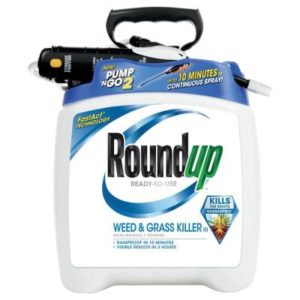
_lores.jpg) Borrelia burgdorferi Credit: CDC
Borrelia burgdorferi Credit: CDC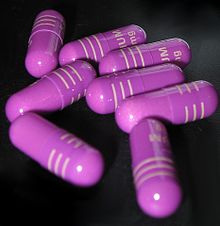 A new study has confirmed an association between proton pump inhibitors (PPIs) — drugs that treat heartburn, peptic ulcers, and other acid-related disorders of the upper gastrointestinal tract — and increased risk for dementia in older patients. An earlier study by the same researchers found the same link between PPI use and dementia risk. The drugs work by lowering the amount of acid produced by the stomach. PPIs are among the most frequently prescribed drugs, and include omeprazole (Losec), esomeprazole (Nexium), lansoprazole (Prevacid), and the over-the-counter medication Olex.
A new study has confirmed an association between proton pump inhibitors (PPIs) — drugs that treat heartburn, peptic ulcers, and other acid-related disorders of the upper gastrointestinal tract — and increased risk for dementia in older patients. An earlier study by the same researchers found the same link between PPI use and dementia risk. The drugs work by lowering the amount of acid produced by the stomach. PPIs are among the most frequently prescribed drugs, and include omeprazole (Losec), esomeprazole (Nexium), lansoprazole (Prevacid), and the over-the-counter medication Olex. Very exciting research IF it pans out - the idea of treating (some) cancers with probiotics (beneficial bacteria). This study was done on mice, and some mice started the probiotic mixture one week before they gave the mice the liver cancer, so...more limitations there. But the idea is so tantalizing and wonderful... And what was in the mixture of bacteria (called probiotic Prohep) that the mice ate that had beneficial results of shrinking liver tumors? The probiotic Prohep is composed of Lactobacillus rhamnosus GG (LGG), Escherichia coli Nissle 1917 (EcN), and heat inactivated VSL#3 (1:1:1). VSL#3 contains: Streptococcus thermophilus, Bifidobacterium breve, Bifidobacterium longum, Bifidobacterium infantis, Lactobacillus acidophilus, Lactobacillus plantarum, Lactobacillus paracasei, and Lactobacillus delbrueckii. Note that Lactobacillus rhamnosus and some of the others are already found in many probiotic mixtures. From Medical Xpress:
Very exciting research IF it pans out - the idea of treating (some) cancers with probiotics (beneficial bacteria). This study was done on mice, and some mice started the probiotic mixture one week before they gave the mice the liver cancer, so...more limitations there. But the idea is so tantalizing and wonderful... And what was in the mixture of bacteria (called probiotic Prohep) that the mice ate that had beneficial results of shrinking liver tumors? The probiotic Prohep is composed of Lactobacillus rhamnosus GG (LGG), Escherichia coli Nissle 1917 (EcN), and heat inactivated VSL#3 (1:1:1). VSL#3 contains: Streptococcus thermophilus, Bifidobacterium breve, Bifidobacterium longum, Bifidobacterium infantis, Lactobacillus acidophilus, Lactobacillus plantarum, Lactobacillus paracasei, and Lactobacillus delbrueckii. Note that Lactobacillus rhamnosus and some of the others are already found in many probiotic mixtures. From Medical Xpress: Another microbe that causes Lyme disease! Lyme disease is the most common tick-borne disease in the northern hemisphere, and it is caused by the bacteria Borrelia burgdorferi. Recently Mayo Clinic researchers found a new bacteria, which they named Borrelia mayonii, in the fluids and tissues of some people diagnosed with Lyme disease in the upper midwestern USA. The symptoms are different from typical Lyme disease: with nausea and vomiting, diffuse rashes (rather than a single bull's-eye rash), and a higher concentration of bacteria in the blood. Same treatment as with the original bacteria , but it may not show up in tests for Lyme disease.
Another microbe that causes Lyme disease! Lyme disease is the most common tick-borne disease in the northern hemisphere, and it is caused by the bacteria Borrelia burgdorferi. Recently Mayo Clinic researchers found a new bacteria, which they named Borrelia mayonii, in the fluids and tissues of some people diagnosed with Lyme disease in the upper midwestern USA. The symptoms are different from typical Lyme disease: with nausea and vomiting, diffuse rashes (rather than a single bull's-eye rash), and a higher concentration of bacteria in the blood. Same treatment as with the original bacteria , but it may not show up in tests for Lyme disease.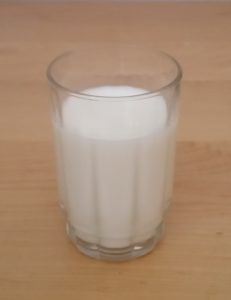 Two new papers just published in the British Journal of Nutrition are analyses of existing studies that compare conventional vs organic milk, and conventional vs organic red meat. Both studies found clear differences between organic meat and milk compared to conventional milk and meat, with the organic milk and meat best health-wise, especially due to differences in
Two new papers just published in the British Journal of Nutrition are analyses of existing studies that compare conventional vs organic milk, and conventional vs organic red meat. Both studies found clear differences between organic meat and milk compared to conventional milk and meat, with the organic milk and meat best health-wise, especially due to differences in  Some studies with humans suggest that cancer growth is slowed with exercise, better cancer prognosis with regular exercise, and lowered cancer recurrence (e.g., exercise after prostate cancer diagnosis), but a recent study looked at the issue more in depth.
Some studies with humans suggest that cancer growth is slowed with exercise, better cancer prognosis with regular exercise, and lowered cancer recurrence (e.g., exercise after prostate cancer diagnosis), but a recent study looked at the issue more in depth.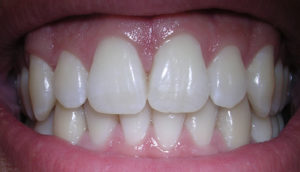 The finding that the oral bacteria Streptococcus mutans, which is found in 10% of the population, is linked with hemorrhagic strokes is big. S. mutans is found in tooth decay or cavities (dental caries). The researchers found a link with cnm-positive S. mutans with both intracerebral hemorrhage (ICH) and also with cerebral microbleeds.
The finding that the oral bacteria Streptococcus mutans, which is found in 10% of the population, is linked with hemorrhagic strokes is big. S. mutans is found in tooth decay or cavities (dental caries). The researchers found a link with cnm-positive S. mutans with both intracerebral hemorrhage (ICH) and also with cerebral microbleeds.